How to cook a bavette steak. Enjoy the robust flavor of this exceptional butcher’s cut of beef.
Go straight to the Recipe Card or
Read on for useful information and step-by-step pictures (2 mins)
What is Bavette Steak?
Bavette steak is a large flap muscle from the boneless flank beef primal. Its role is to support the animal’s viscera along with a couple of smaller muscles on the side of the belly.
The muscle is also known as flap meat but the French word bavette, which translates to ‘bib’, more accurately describes its broad and flat shape.
Pictured below is a whole bavette flap, which typically:
- weighs around four pounds when properly trimmed;
- has one end that is thinner and tapered;
- has striated muscle fibers, much like outside skirt steak, and its meat is very dense.
Other Names for Bavette Steak
This delicious beef cut is also known as sirloin flap steak, being derived from the bottom sirloin butt. Other names include flap steak and sirloin bavette.
Buy Bavette Steak
Buy the right cut. Bavette is often confused with flank steak, which it is not. The two are located adjacent to each other, but flank is dryer, smaller, without any fat and with fibers that run along its length. Be sure to buy bavette from a butcher that knows his cuts well.
Grade matters. This cut will taste best when USDA Choice or Prime beef. Also, make sure that not all the fat has been removed as the steak lacks internal marbling.
NOTE: Although bavette is a delicious steak, the nature of the cut requires aging in order for the meat not to be chewy. An industry standard is twenty-one days. Very tender examples have often been wet aged up to forty-five days.
What Does Bavette Steak Taste Like?
There is a saying among butchers that bavette sits at the apex of the flavor and price ratio. Bavette steak has a robust beefy taste that rivals that of ribeye. Because it is leaner its flavor often comes through even stronger than ribeye’s.
What is the Best Way to Cook Bavette Steak?
Grill. Grilling is by far the best way to cook a bavette – whole or smaller portions of it. On the grill it forms a beautiful crust and if using charcoal it takes on the delicious aromas from the wood.
Stove top. If you would like to cook bavette on the stove, the best approach is to cut the whole piece into thick steak strips – with the grain.
Searing the smaller pieces in a skillet is much easier and also addresses an issue with the open grain texture of the meat. Open grain releases a lot of water and if you try to cook the whole bavette on the stove top there is a high chance that it will steam in the pan instead of form an appetizing thick crust like it does on the grill.
Step-by-Step Grilled Bavette Sirloin
Prep. Before you grill this steak you need to make sure that you have brought it to room temperature. While you can marinate it (we like this beer marinade for steak), you can simply use kosher salt to liberally season the outside.
Grill. Place directly over the grates of a preheated grill (medium-hot) and allow up to twelve minutes per side for a whole bavette, about four-five minutes per side for smaller sections.
Top Tips to Consider
- When grilling the whole flap it is to be expected that the ends will cook faster, which is why we recommend that they are situated on the periphery of the heat source as shown above. This ensures less intense heat is cooking them.
- The density of the flap muscle and the thickness of the cut account for it coming to temperature quite slowly, so medium-hot grill is better than hot.
To What Temperature Should You Grill Bavette Flap Steak?
The ideal temperature to cook bavette to is medium-rare to medium. Our preference is a solid medium-rare. If cooked only until rare it will be too chewy, even if it has been aged sufficiently.
Note that there is a difference between when the steak should be removed from the grill or skillet and the final serving temperature.
Medium-rare. Stop cooking when 120-125 F in the thickest part / final serving temperature will reach 125-130 F.
Medium. Stop cooking when 130-135 F in the thickest part / final serving temperature will reach 135-145 F.
Rest Time is Essential
While all beef steaks benefit from rest time, in the case of bavette, especially when cooked whole, resting is crucial.
Due to the sheer size and thickness of the cut allow at least 15 minutes of rest in order for the natural juices to be retained and tenderness increased. You can rest it in a very low heat area of the grill or onto a board, loosely tented to keep warm.
How to Slice This Steak Against the Grain
- To cut the whole flap bavette against the grain aim for diagonal slices at about forty-five degrees to the width of the meat. This will help you slice tender pieces because the muscle fibers run sideways. See picture above.
- If you cooked smaller steaks carved from the whole flap with the grain, then you simply need to cut these elongated steaks into bite sized pieces on their short side. This will essentially be about ninety degrees against the grain.
Compatible Sauces & Serving Ideas for Sirloin Flap
- A perfectly grilled steak is best complemented by a champion sauce and in keeping with the French name we like to serve bavette steak with persillade – a vibrant parsley centered French sauce that just sings along the tender bites of meat. Here is a recipe if you’d like to try it.
- Also try grilled bavette with classic chimichurri. Recipe here.
- Skillet seared smaller portions of bavette are superb with this bourbon sauce for steak or this creamy shrimp steak sauce.
- Classic steak side dishes such as frites, twice baked potatoes, crispy roasted potatoes, grilled vegetables, blistered asparagus spears, sauted mushrooms and onions.
You Might Enjoy
Steak Sauces – Curated Recipes
Grilled Flat Iron Steak
Grilled Outside Skirt Steak
Coulotte Steak
Picanha Steak on the Grill
Sirloin Tip Steak
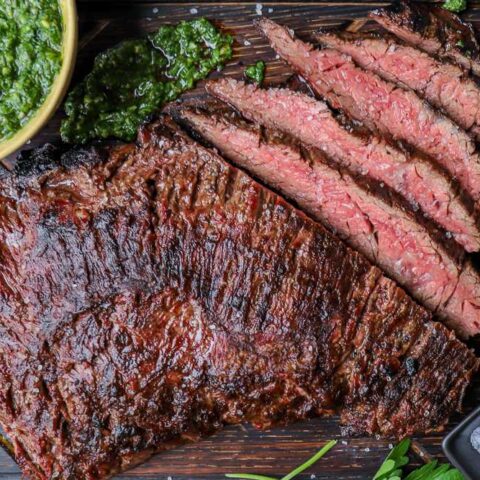
Bavette Steak (Grilled or Pan-Seared)
The best way to cook bavette steak is on the grill, over medium-high heat so it can form a thick crust and cook to a solid medium-rare temperature. This is not a steak that cooks fast on super hot grill - the dense meat requires a little more time to arrive at temperature so take care not to rush it. Serve with one of the two green sauces suggested below for a spectacular summer meal.
Ingredients
- 4-5 lbs bavette steak (whole flap)
- kosher salt, to taste
- 2-3 tbsp cooking oil (if pan-searing)
- persillade sauce (optional, for serving)
- chimichurri sauce (optional, for serving)
Instructions
GRILLED BAVETTE STEAK
- Trim the most visible silver skin from the meat (if needed), leave the fat (unless there is a really thick area of fat which is not common). Season the thicker areas generously with kosher salt, the thinner areas and the edges lightly. Let the steak come to room temperature for about 20 minutes.
- Preheat grill to medium-hot. For charcoal grill prepare a large chimney of lump charcoals and when white and glowing open the vents almost completely and add the charcoals, then close the lid for about 5 minutes.
- Place the whole bavette directly over the heat, with the thinner edges situated towards the periphery of the heat source (burner or charcoals) because they will cook faster. After 5 minutes you can move the steak laterally, taking care to have the thickest parts directly over the heat source.
- Grill for 10 to 12 minutes per side for a solid medium-rare (see temperature notes below).
- Rest for at least 15 minutes, loosely tented with foil to keep it warm. Slice against the grain holding the knife at 45 degrees to the muscle fibers for more tender bites.*
STOVE TOP BAVETTE STEAK
- Prep the bavette as in #1 above. Cut it into portions (shaped like thick strips of salmon) going with the grain (easy because it runs along the width).
- Heat a skillet over medium-hot heat, add a bit of cooking oil and sear the strips for about 4-5 minutes per side or until the internal temperature measured in the thickest part satisfies the recommended ranges below.
- Rest the cooked bavette pieces loosely tented with foil for about 5-8 minutes. Slice at 90 degrees, against the grain.
Notes
*Feel free to first remove the thinner ends of the bavette as they are likely slightly overdone. Reserve them for extra servings or to quickly reheat for another meal of fajitas or tacos.
TEMPERATURE
Use a meat thermometer to take the internal temperature of the steak. Do not cook this cut rare (will be too chewy) or beyond medium (will become dry).
Medium-rare. Stop cooking when 120-125 F in the thickest part / final serving temperature will reach 125-130 F.
Medium. Stop cooking when 130-135 F in the thickest part / final serving temperature will reach 135-145 F.
Nutrition Information:
Yield: 8 Serving Size: 1Amount Per Serving: Calories: 727Total Fat: 48gSaturated Fat: 19gTrans Fat: 0gUnsaturated Fat: 22gCholesterol: 248mgSodium: 260mgCarbohydrates: 1gFiber: 0gSugar: 1gProtein: 67g

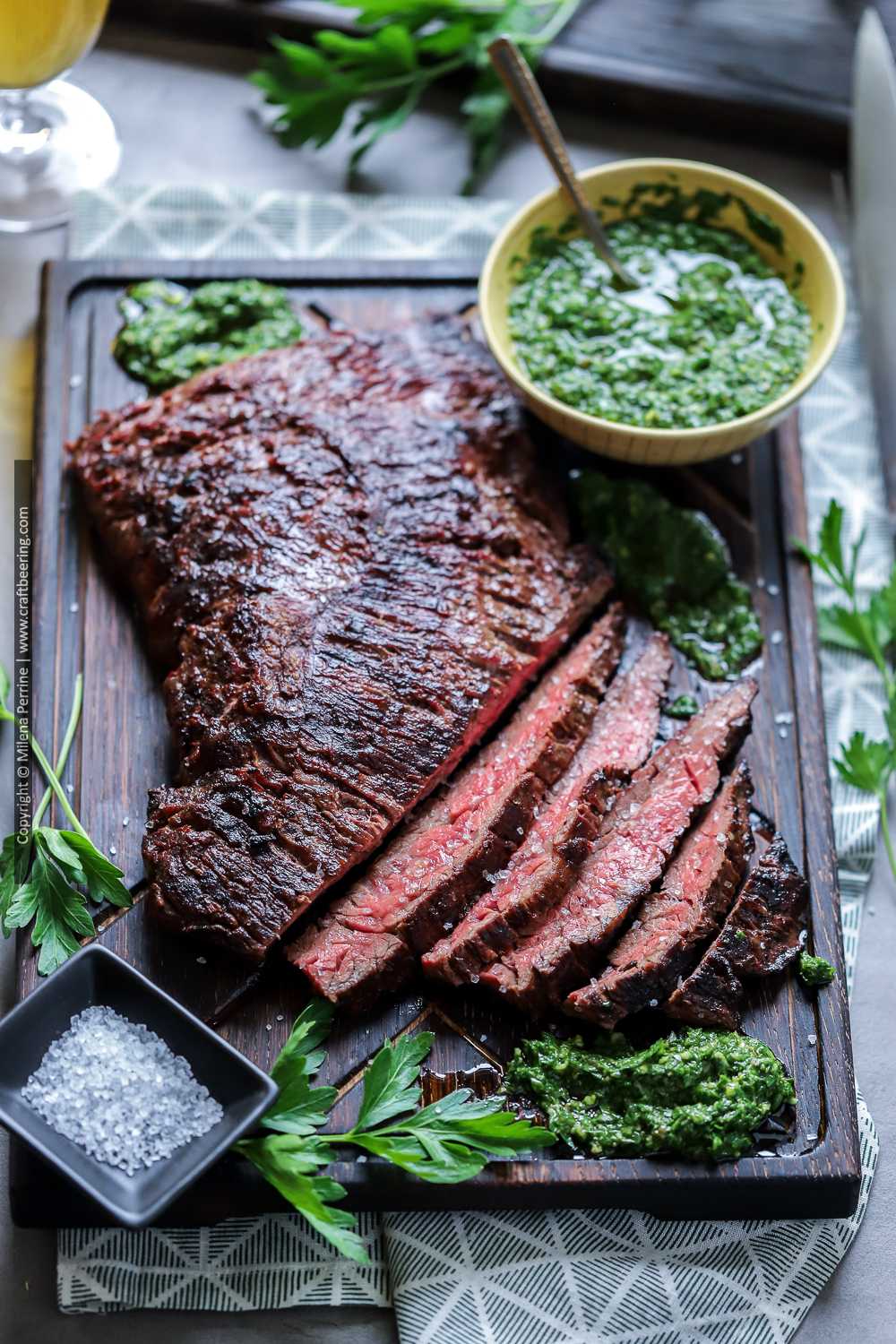
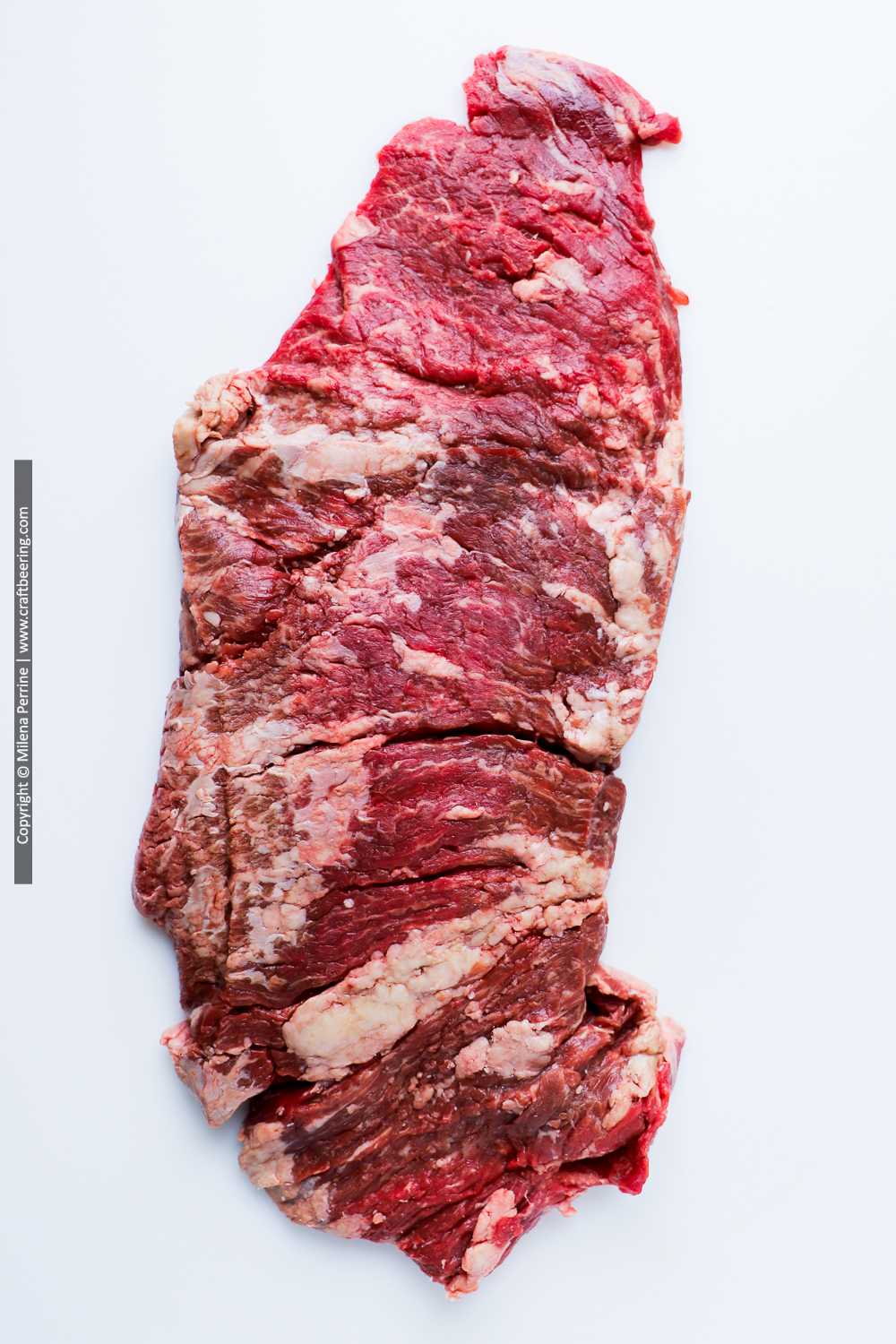
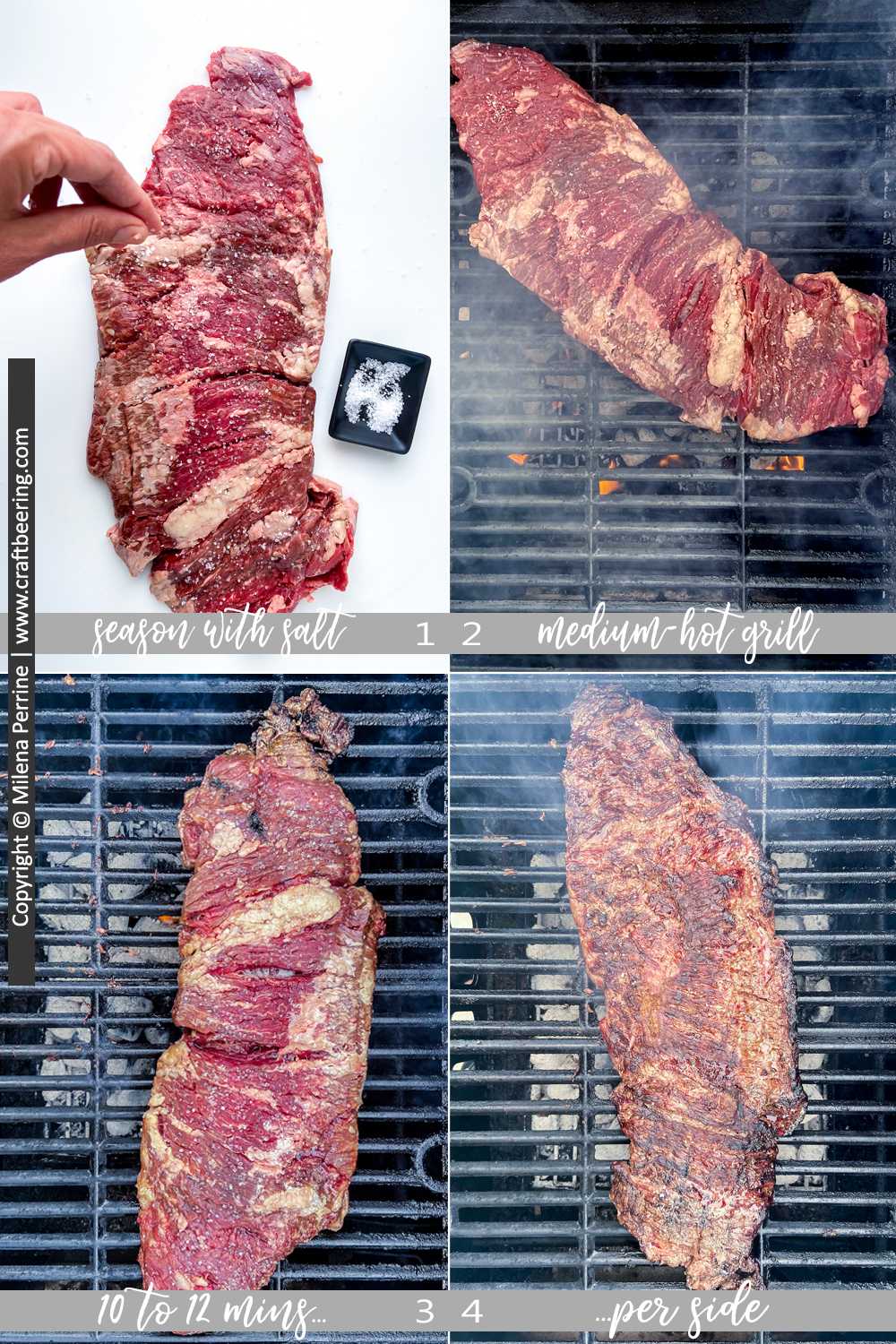
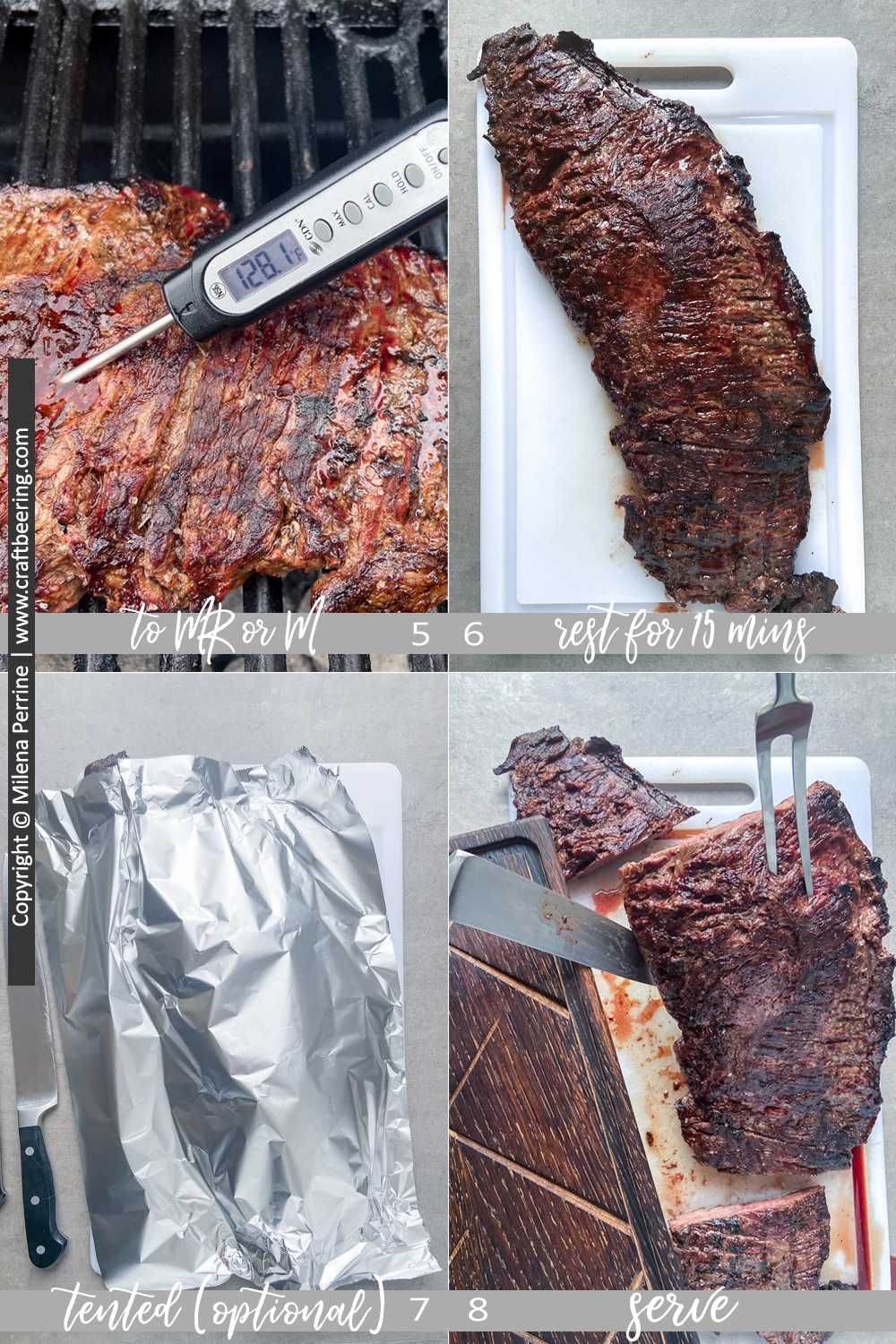
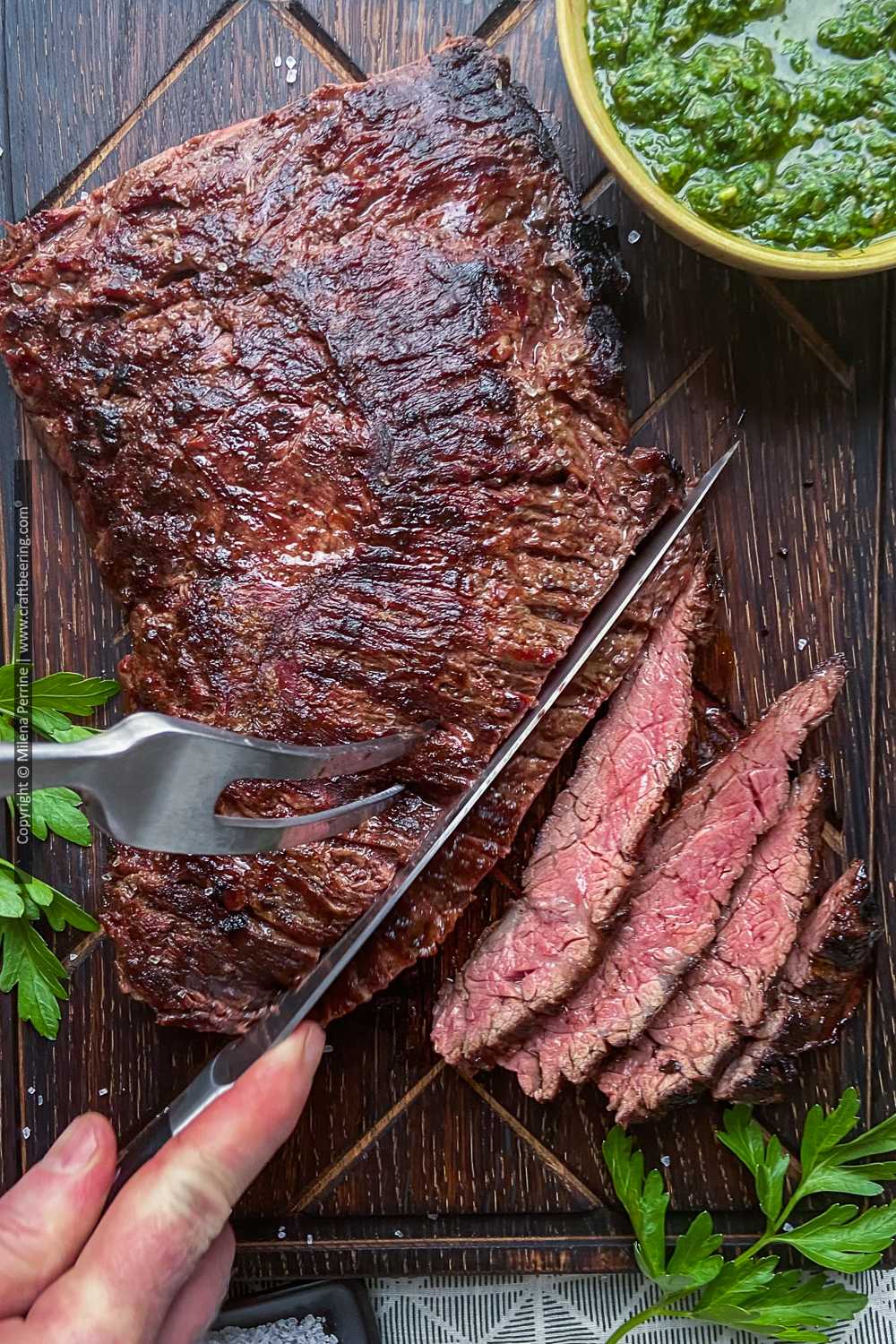
Leave a Reply